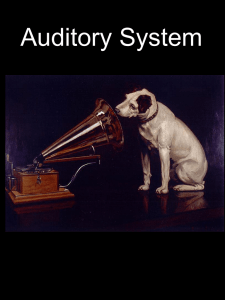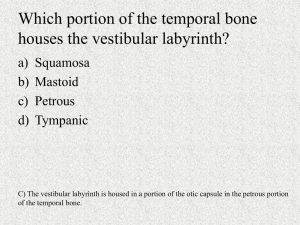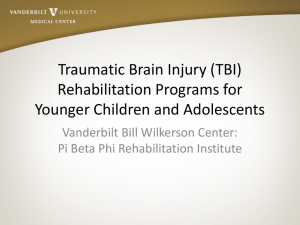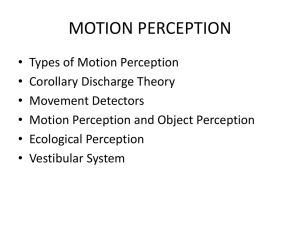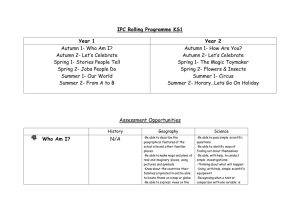Vestibular Anatomy & Function
advertisement
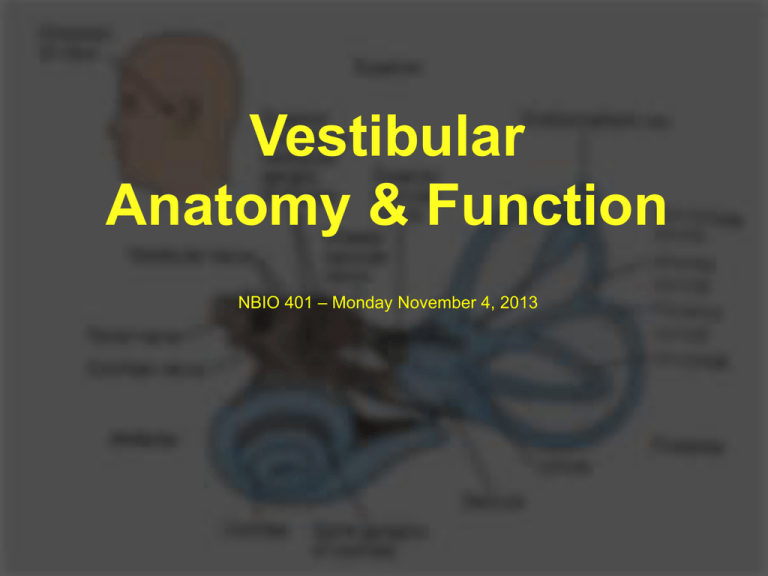
Vestibular Anatomy & Function NBIO 401 – Monday November 4, 2013 Objectives: -Be able to describe the structure of the two components of the vestibular system, the semicircular canals and the otoliths. -Be able explain how the structure of the semicircular canals and the position and orientation of the hair cells in the ampulla allow the canals to transduce head rotation into neural signals. -Be able explain how the structure of the otoliths and the position and orientation of the hair cells in the saccule and utricle transduce head tilt and linear acceleration into neural signals. -Be able to describe the pathway from the vestibular labyrinth in the periphery to the vestibular nuclei, including the locations of neuron cell bodies and axon terminations. Objectives: -Be able to describe the structure of the two components of the vestibular system, the semicircular canals and the otoliths. -Be able explain how the structure of the semicircular canals and the position and orientation of the hair cells in the ampulla allow the canals to transduce head rotation into neural signals. -Be able explain how the structure of the otoliths and the position and orientation of the hair cells in the saccule and utricle transduce head tilt and linear acceleration into neural signals. -Be able to describe the pathway from the vestibular labyrinth in the periphery to the vestibular nuclei, including the locations of neuron cell bodies and axon terminations. Objectives: -Be able to describe the structure of the two components of the vestibular system, the semicircular canals and the otoliths. -Be able explain how the structure of the semicircular canals and the position and orientation of the hair cells in the ampulla allow the canals to transduce head rotation into neural signals. -Be able explain how the structure of the otoliths and the position and orientation of the hair cells in the saccule and utricle transduce head tilt and linear acceleration into neural signals. -Be able to describe the pathway from the vestibular labyrinth in the periphery to the vestibular nuclei, including the locations of neuron cell bodies and axon terminations. Objectives: -Be able to describe the structure of the two components of the vestibular system, the semicircular canals and the otoliths. -Be able explain how the structure of the semicircular canals and the position and orientation of the hair cells in the ampulla allow the canals to transduce head rotation into neural signals. -Be able explain how the structure of the otoliths and the position and orientation of the hair cells in the saccule and utricle transduce head tilt and linear acceleration into neural signals. -Be able to describe the pathway from the vestibular labyrinth in the periphery to the vestibular nuclei, including the locations of neuron cell bodies and axon terminations. Vestibular Labyrinth: -semicircular canals -otoliths SEMICIRCULAR CANALS SEMICIRCULAR CANALS HOLLOW HOOP (CANAL) SEMICIRCULAR CANALS HOLLOW HOOP (CANAL) WIDER CHAMBER IN CANAL (AMPULLA) SEMICIRCULAR CANALS (ROTATION) SEMICIRCULAR CANALS (ROTATION) OTOLITHS (TILT & ACCELERATION) SEMICIRCULAR CANALS (ROTATION) OTOLITHS (TILT & ACCELERATION) Semicircular Canals (ROTATION) SEMICIRCULAR CANALS HOLLOW HOOP (CANAL) WIDER CHAMBER (AMPULA) AMPULA AMPULA AMPULA UTRICLE AMPULA Position of semicircular canals in the skull Otoliths (TILT, ACCELERATION) OTOLITHS (TILT & ACCELERATION) OTOLITHS (TILT & ACCELERATION) Kinocillium (longest process; at one side) Stereocilia (all shorter processes) Kinocillium (longest process; at one side) HAIR CELLS IN OTOLITHS Otoliths HAIR CELLS IN OTOLITHS Otoliths HAIR CELLS IN OTOLITHS Otoliths Bending processes toward kinocillium DEPOLARIZES Bending away from kinocillium HYPERPOLARIZES Orientation of the maculae of the utricle and saccule Fitzpatrick, R. C. et al. J Appl Physiol 96: 2301-2316 2004; doi:10.1152/japplphysiol.00008 .2004 Copyright ©2004 American Physiological Society Orientation of the maculae of the utricle and saccule Fitzpatrick, R. C. et al. J Appl Physiol 96: 2301-2316 2004; doi:10.1152/japplphysiol.00008 .2004 Copyright ©2004 American Physiological Society Central Connections of the Vestibular Labyrinth Pathway from the canals and otoliths to the brain is via axons whose cell bodies are in a ganglion (called Scarpa’s ganglion or the vestibular ganglion). Scarpa’s Ganglion (vestibular ganglion) May 9, 1752 – October 31, 1832 Carlo Beolchin (Scarpa’s student) Museo per la storia dell ‘Universita de Pavia Museo per la storia dell ‘Universita de Pavia Museum for the history of the University of Pavia Museo per la storia dell ‘Universita de Pavia Museum for the history of the University of Pavia Scarpa’s Ganglion (vestibular ganglion) The proximal end of the axons of neurons in Scarpa’s ganglion terminate in the vestibular nuclei. inferior cerebellar peduncle V VIIIth nerve vestibular nuclei inferior cerebellar peduncle VIIIth nerve Vestibular nuclei project to: 1) spinal cord 2) oculomotor nuclei 3) reticular formation 4) cerebellum 5) thalamus Alcohol and Dizziness Normally, the cupula has neutral buoyancy in endolymph that surrounds it. Alcohol is less dense than water (see demo to right). When you drink, alcohol enters the blood, and then into the cupula. The cupula becomes less dense. It floats in the endolymph more. The cupula bends a little more than usual away from the ground. This bends hair cells, as if you are rotating, even when you are still. This gives you the sensation of rotating when you are still, i.e., you get the dreaded spins. Blue H2O cubes float in water (left) but sink in alcohol (right) the end

